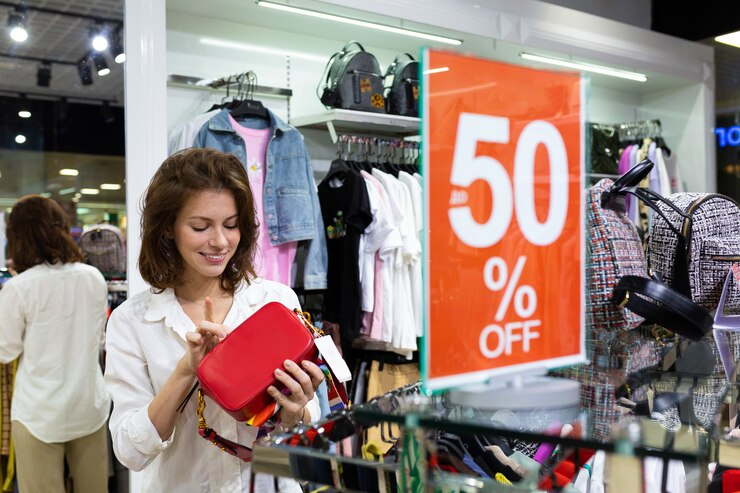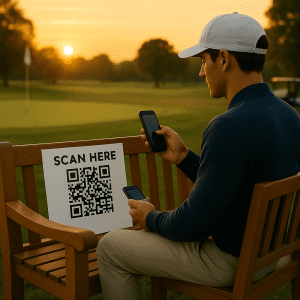Shopper Advertiser Success Starts with Personalization
For decades, marketers have focused on reaching the right customer, at the right time, with the right message. But as digital channels become increasingly saturated—and consumer attention spans dwindle—the power of physical, in-hand advertising is making a major comeback. Especially when paired with personalization.
Enter the new-age shopper advertiser: a marketer who understands that in-hand materials (like coffee sleeves, pharmacy bags, and pizza boxes) can deliver not only impressions but also emotional relevance. And when those materials are personalized? Even better.
In this post, we’ll explore how personalization techniques in in-hand media can supercharge your retail marketing, strengthen customer marketing, and set your brand apart in the highly competitive space of consumer goods marketing.
Why Personalization Matters for the Modern Shopper Advertiser
Today’s shoppers are bombarded with messaging. Studies show that the average person sees 6,000–10,000 ads daily. Yet, what cuts through that noise is relevance.
According to Epsilon:
80% of consumers are more likely to purchase when brands offer personalized experiences.
Personalized marketing delivers 5x–8x ROI compared to non-personalized campaigns.
For the shopper advertiser, personalization is no longer optional. It’s the cost of attention.
And when done via tactile, in-store marketing experiences—such as handing someone a tailored coupon or a branded takeaway with their pizza order—the impact is amplified.
The Role of In-Hand Advertising in Personalized Shopper Marketing
In-hand advertising refers to branded materials that consumers physically receive or interact with. These include:
Coffee cup sleeves
Prescription bags
Door hangers
Pizza boxes
Takeout containers
Hand sanitizer stations
Shopping cart inserts
Unlike digital formats, these materials benefit from zero digital clutter, high dwell time, and real-world context.
Now, imagine combining that power with data-driven personalization. That’s where the modern shopper advertiser thrives.
Personalization Techniques Every Shopper Advertiser Should Know
Use Behavioral Data for Targeted Messaging
Just like in digital channels, behavior-based segmentation is key. For in-hand media, this might mean:
Purchase-based triggers: A shopper who buys organic produce receives a coupon for plant-based vitamins via the pharmacy bag.
Time-of-day messaging: A coffee sleeve used during morning rush hours promotes quick lunch solutions nearby.
Event-based triggers: During back-to-school season, pizza box ads include discounts on lunch snacks.
This behavioral approach aligns your in-hand material with real shopper intent, making it timely and useful.
Localize and Contextualize Content
A shopper advertiser working on a national campaign might think globally—but wins locally. Hyperlocal messaging boosts conversion and engagement.
Examples:
“Brooklyn’s Favorite Cold Brew, Now 20% Off at Flatbush Market” printed on a coffee sleeve.
“Heading to Midtown Gym? Don’t Forget Your Protein—Special Deal Inside.”
This form of consumer goods marketing positions your brand as a relevant, everyday ally—not just a generic vendor.
QR Codes That Lead to Personalized Digital Journeys
Modern trade marketing isn’t about one channel—it’s about seamlessly bridging the offline and online worlds.
By adding a QR code to your in-hand media, you can:
Lead shoppers to a landing page tailored to their location, behavior, or product interest.
Provide loyalty program onboarding specific to a store or event.
Trigger retargeting flows that remember what the user scanned and visited.
For example, a QR code on a coffee sleeve could take a user to:
“Welcome back! Get 15% off your next latte when you order ahead on the app.”
That’s personalized customer marketing in action.
Customize Offers by Segment—Even If the Material is Mass-Printed
While truly individualized printing is possible (through variable data printing), there’s also power in segment-specific personalization.
Say you’re promoting a wellness supplement brand:
For gyms, the ad could focus on energy and performance.
For pharmacies, it could focus on immunity and daily nutrition.
For cafés, the offer could tie in with morning routines.
The same brand, same SKU—but personalized for where the shopper is in their journey. That’s strategic retail marketing made smarter by segmentation.
Examples of Personalized In-Hand Campaigns That Deliver Results
Let’s take a look at what this looks like in the real world:
✅ Case Study 1: Pharmacy Bag Promotion for Flu Season
Audience: Health-conscious shoppers
Medium: In-hand prescription bags
Message: “Feeling rundown? Get 10% off our all-natural vitamin bundle.”
Personalization layer: Timing (flu season), product relevance, location-specific QR code
Result: 37% increase in coupon redemption compared to a generic print ad.
✅ Case Study 2: Pizza Box Ads for Back-to-School Season
Audience: Families with school-age children
Medium: Branded pizza box topper
Message: “Fuel Up! 2-for-1 on Healthy Snack Packs for School Lunches.”
Personalization layer: Calendar-based, tied to local school district schedule
Result: 29% increase in trial of featured product SKUs.
Challenges Shopper Advertisers Face—and How to Solve Them
Even powerful personalization techniques come with executional roadblocks.
❌ Challenge 1: Limited personalization options on static media
✔️ Solution: Use modular templates that allow variable designs by region or partner.
❌ Challenge 2: Lack of actionable data in offline retail
✔️ Solution: Integrate basic CRM tools, loyalty program tracking, and QR scan data.
❌ Challenge 3: Scale
✔️ Solution: Start small. Test locally, iterate, then scale with insights.
The Future of Shopper Advertiser Campaigns Is In-Hand and Insight-Driven
If you’re a shopper advertiser relying solely on shelf wobblers and banner ads, you’re missing massive opportunities.
Modern in-store marketing demands more than visibility—it demands meaning. That means meeting shoppers with relevant offers, right when and where they’re ready to act—and doing it in the palm of their hand.
Personalization, even in analog formats, is possible—and profitable. The key is to combine behavioral intelligence, local insight, and thoughtful creative into every printed piece.
Final Thoughts: Shopper Advertiser Tactics That Create Real Connections
In a world of fleeting impressions and passive scrolling, in-hand advertising cuts through—with real presence, real personalization, and real performance.
So, if you’re a shopper advertiser looking to stand out, stop asking how to go digital. Start asking how to go personal.






